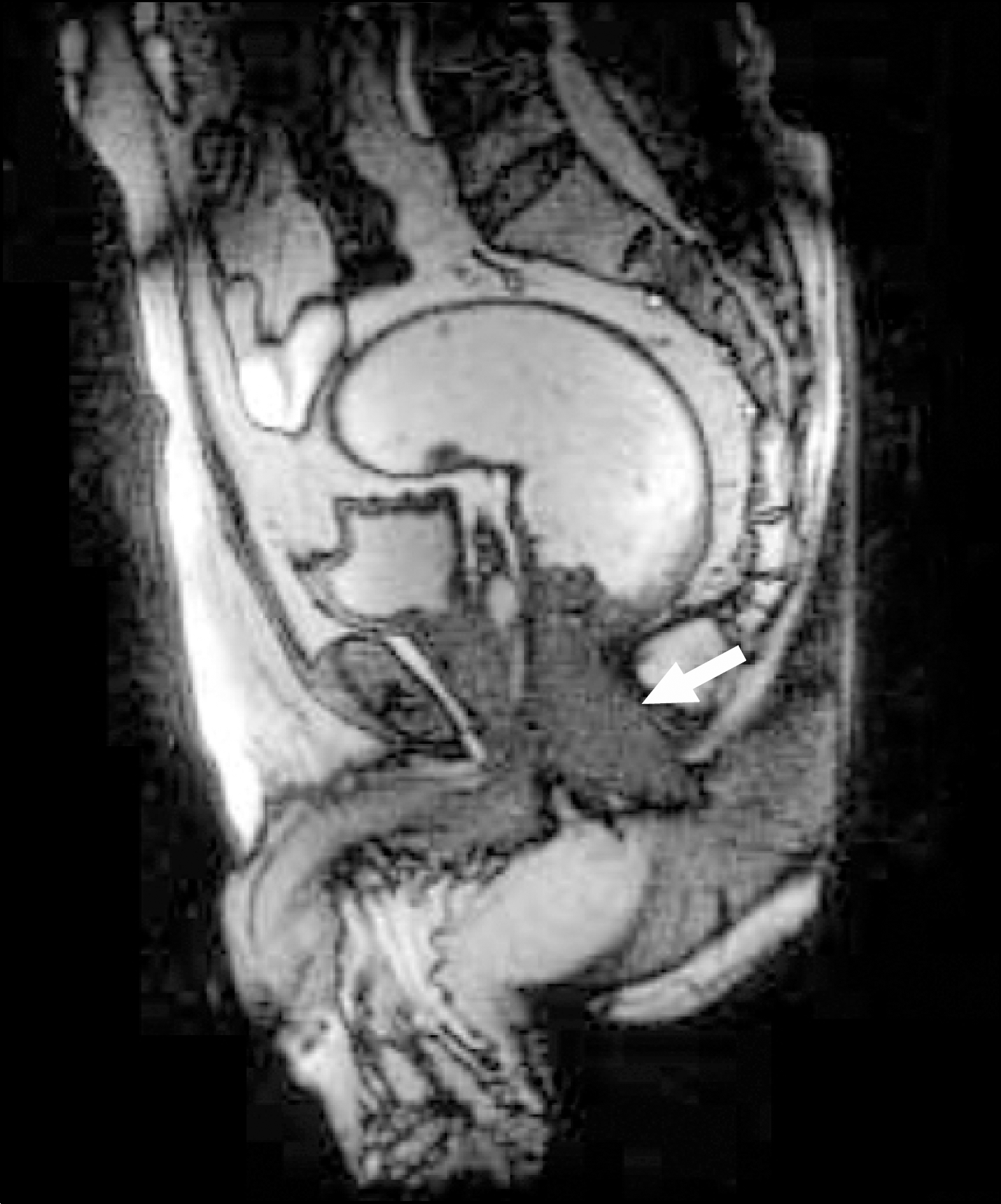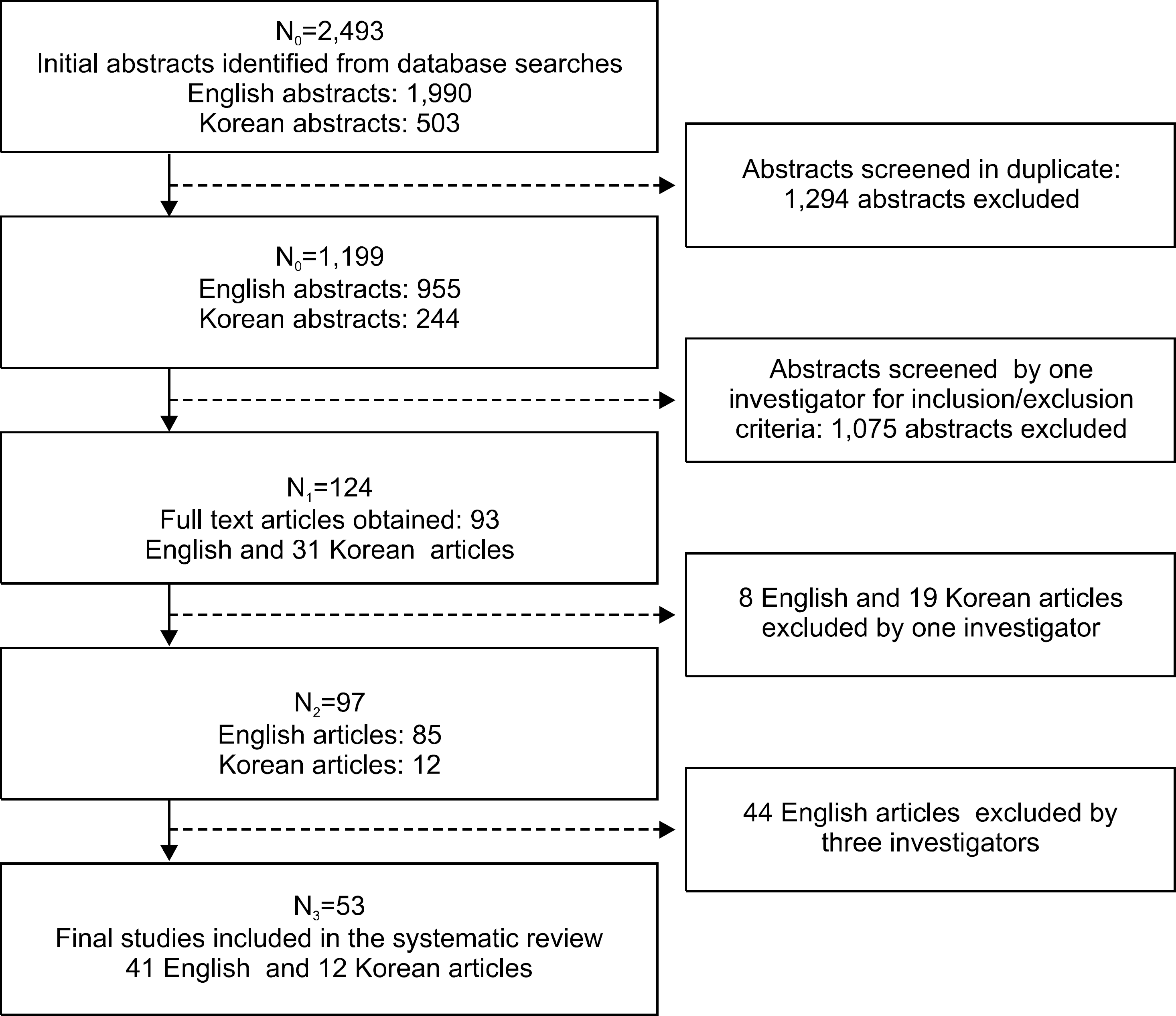Abstract
To diagnose constipation accurately in self-reported constipated patients is very important not to miss organic disease and prevent therapeutic abuse. To investigate the etiology of functional constipation is also important to determine the therapeutic modality of constipation. In this systemic review, the clinical usefulness of symptom evaluation, diagnostic tests to rule out organic and systemic disease, and functional tests to discriminate underlying pathophysiology in the diagnosis of constipation were discussed. No specific symptoms or tests were available to predict organic versus functional constipation or differentiate slow transit constipation versus evacuation disorder. Therefore, collaborative studies are necessary to determine the pathophysiology of this disorder.
REFERENCES
1. Jun DW, Park HY, Lee OY, et al. A population-based study on bowel habits in a Korean community: prevalence of functional constipation and self-reported constipation. Dig Dis Sci. 2006; 51:1471–1477.

2. Choi H, Choi MG, Kim SW, et al. Functional gastrointestinal disorders in patients with gastrointestinal symptoms. Korean J Gastroenterol. 1999; 34:741–748.
4. Choi MG. Evidence based guideline for diagnosis and treatment: diagnostic guideline for constipation. Korean J Neurogastroenterol Motil. 2005; 11:44–50.
5. Sandler RS, Drossman DA. Bowel habits in young adults not seeking health care. Dig Dis Sci. 1987; 32:841–845.

6. Thompson WG, Longstreth GF, Drossman DA, Heaton KW, Irvine EJ, Mü ller-Lissner SA. Functional bowel disorders and functional abdominal pain. Gut. 1999; 45(suppl 2):II43–47.

7. Drossman DA. The functional gastrointestinal disorders and the Rome III process. Gastroenterology. 2006; 130:1377–1390.

8. Rao SS, Ozturk R, Laine L. Clinical utility of diagnostic tests for constipation in adults: a systematic review. Am J Gastroenterol. 2005; 100:1605–1615.

9. Brandt LJ, Prather CM, Quigley EM, Schiller LR, Schoenfeld P, Talley NJ. Systematic review on the management of chronic constipation in North America. Am J Gastroenterol. 2005; 100(suppl 1):S5–S21.

10. Baker JT, Harvey RF. Bowel habit in thyrotoxicosis and hypothyroidism. Br Med J. 1971; 1:322–323.

11. Mü ller-Lissner SA, Kamm MA, Scarpignato C, Wald A. Myths and misconceptions about chronic constipation. Am J Gastroenterol. 2005; 100:232–242.
12. Qureshi W, Adler DG, Davila RE, et al. ASGE guideline: guideline on the use of endoscopy in the management of constipation. Gastrointest Endosc. 2005; 62:199–201.

13. Pepin C, Ladabaum U. The yield of lower endoscopy in patients with constipation: survey of a university hospital, a public county hospital, and a Veterans Administration medical center. Gastrointest Endosc. 2002; 56:325–332.

14. Gupta M, Holub J, Knigge K, Eisen G. Constipation is not associated with an increased rate of findings on colonoscopy: results from a national endoscopy consortium. Endoscopy. 2010; 42:208–212.

15. Patriquin H, Martelli H, Devroede G. Barium enema in chronic constipation: is it meaningful? Gastroenterology. 1978; 75:619–622.

16. Gerson DE, Lewicki AM, McNeil BJ, Abrams HL, Korngold E. The barium enema; evidence for proper utilization. Radiology. 1979; 130:297–301.

17. Wald A. Colonic transit and anorectal manometry in chronic idiopathic constipation. Arch Intern Med. 1986; 146:1713–1716.

18. Abrahamsson H, Antov S, Bosaeus I. Gastrointestinal and colonic segmental transit time evaluated by a single abdominal x-ray in healthy subjects and constipated patients. Scand J Gastroenterol. 1988; 152(suppl):S72–S80.

19. Bouchoucha M, Devroede G, Arhan P, et al. What is the meaning of colorectal transit time measurement? Dis Colon Rectum. 1992; 35:773–782.

20. Ghoshal UC, Gupta D, Kumar A, Misra A. Colonic transit study by radio-opaque markers to investigate constipation: validation of a new protocol for a population with rapid gut transit. Natl Med J India. 2007; 20:225–229.
21. Metcalf AM, Phillips SF, Zinsmeister AR, MacCarty RL, Beart RW, Wolff BG. Simplified assessment of segmental colonic transit. Gastroenterology. 1987; 92:40–47.

22. Lundin E, Graf W, Garske U, Nilsson S, Maripuu E, Karlbom U. Segmental colonic transit studies: comparison of a radiological and a scintigraphic method. Colorectal Dis. 2007; 9:344–351.

23. Rao SS, Mudipalli RS, Stessman M, Zimmerman B. Investigation of the utility of colorectal function tests and Rome II criteria in dyssynergic defecation (Anismus). Neurogastroenterol Motil. 2004; 16:589–596.

24. Lee JH, Rhee PL, Suh SW, et al. Comparison of 4-day and 7-day methods in the evaluation of colon transit time. Korean J Gastroenterol. 2001; 38:241–246.
25. Jung HK, Kim DY, Moon IH, Hong YS. Colonic transit time in diabetic patients - comparison with healthy subjects and the effect of autonomic neuropathy. Yonsei Med J. 2003; 44:265–272.

26. Rao SS, Kuo B, McCallum RW, et al. Investigation of colonic and whole-gut transit with wireless motility capsule and ra-diopaque markers in constipation. Clin Gastroenterol Hepatol. 2009; 7:537–544.

27. Rao SS, Patel RS. How useful are manometric tests of anorectal function in the management of defecation disorders? Am J Gastroenterol. 1997; 92:469–475.
28. Rao SS, Hatfield R, Soffer E, Rao S, Beaty J, Conklin JL. Manometric tests of anorectal function in healthy adults. Am J Gastroenterol. 1999; 94:773–783.

29. Sun WM, Rao SS. Manometric assessment of anorectal function. Gastroenterol Clin North Am. 2001; 30:15–32.

30. Azpiroz F, Enck P, Whitehead WE. Anorectal functional testing: review of collective experience. Am J Gastroenterol. 2002; 97:232–240.

31. Bilali S, Pfeifer J. Anorectal manometry: are fatigue rate and fatigue rate index of any clinical importance? Tech Coloproctol. 2005; 9:225–228.

32. Morio O, Meurette G, Desfourneaux V, D'Halluin PN, Bretagne JF, Siproudhis L. Anorectal physiology in solitary ulcer syndrome: a case-matched series. Dis Colon Rectum. 2005; 48:1917–1922.

33. Chang SH, Min UG, Choi OJ, et al. Diagnostic efficacy of anorectal manometry for the diagnosis of Hirschsprung's disease. Korean J Pediatr Gastroenterol Nutr. 2003; 6:24–31.

34. Vasudevan SP, Scott SM, Gladman MA, Lunniss PJ. Rectal hyposensitivity: evaluation of anal sensation in female patients with refractory constipation with and without faecal incontinence. Neurogastroenterol Motil. 2007; 19:660–667.

35. Barnett JL, Hasler WL, Camilleri M. American Gastroenterological Association medical position statement on anorectal testing techniques. American Gastroenterological Association. Gastroenterology. 1999; 116:732–760.
36. Rao SS, Azpiroz F, Diamant N, Enck P, Tougas G, Wald A. Minimum standards of anorectal manometry. Neurogastroenterol Motil. 2002; 14:553–559.

37. Jones MP, Post J, Crowell MD. High-resolution manometry in the evaluation of anorectal disorders: a simultaneous comparison with water-perfused manometry. Am J Gastroenterol. 2007; 102:850–855.

38. Kim SH, Hwang YH, Choi KP. A role of anorectal physio-logic study for the diagnosis of chronic constipation. J Korean Soc Coloproctol. 2000; 16:231–238.
39. Jang GY, Lee JS, Lim HH, et al. Anorectal symtoms and anorectal pathophysiologic findings in patients with levator ani syndrome and protalgia fugax. Korean J Gastrointest Motil. 2003; 9:37–41.
40. Jung SH, Myung SJ, Yang SK, et al. Manometric classification of pelvic floor dyssynergia and its clinical significance in patients with constipation. Korean J Gastroenterol. 2003; 41:456–464.
41. Rao SS. Constipation: evaluation and treatment of colonic and anorectal motility disorders. Gastroenterol Clin North Am. 2007; 36:687–711.

42. Bharucha AE, Fletcher JG. Recent advances in assessing anorectal structure and functions. Gastroenterology. 2007; 133:1069–1074.

43. Minguez M, Herreros B, Sanchiz V, et al. Predictive value of the balloon expulsion test for excluding the diagnosis of pelvic floor dyssynergia in constipation. Gastroenterology. 2004; 126:57–62.

44. Kim DH, Myung SJ, Yang SK, et al. Clinical parameters for differentiating pelvic floor dyssynergia (PFD) in constipated patients. Korean J Gastrointest Motil. 2002; 8:167–176.
45. Agachan F, Pfeifer J, Wexner SD. Defecography and proctography. Results of 744 patients. Dis Colon Rectum. 1996; 39:899–905.
46. Liu BH, Fang SW, Tong WD, Gong SG, Zhang SB. Role of pelvicography and colpocystodefecography in diagnosis of outlet obstructive constipation. Int J Colorectal Dis. 2005; 20:317–320.

47. Murad-Regadas S, Peterson TV, Pinto RA, Regadas FS, Sands DR, Wexner SD. Defecographic pelvic floor abnormal-ities in constipated patients: does mode of delivery matter? Tech Coloproctol. 2009; 13:279–283.

48. Taylor SA. Imaging pelvic floor dysfunction. Best Pract Res Clin Gastroenterol. 2009; 23:487–503.

49. Roos JE, Weishaupt D, Wildermuth S, Willmann JK, Marin-cek B, Hilfiker PR. Experience of 4 years with open MR defecography: pictorial review of anorectal anatomy and disease. Radiographics. 2002; 22:817–832.

50. Murad-Regadas SM, Regadas FS, Rodrigues LV, Silva FR, Soares FA, Escalante RD. A novel three-dimensional dynamic anorectal ultrasonography technique (echodefecography) to as-sess obstructed defecation, a comparison with defecography. Surg Endosc. 2008; 22:974–979.

51. Park KS, Chung JJ, Kim MH, Park S, Yang HC. Usefulness of colon transit time and defecography in patients with chronic constipation. J Korean Radiol Soc. 2006; 54:409–415.

52. Yang JH, Lee JS, Hong SJ, et al. The rectal perception in patients with constipation-predominant irritable bowel syndrome and functional constipation. Korean J Gastrointest Motil. 2005; 11:58–65.
53. Chung EJ, Myung SJ, Kim AY, et al. Utility of dynamic MR defecography in chronic functional constipation. Korean J Gastrointest Motil. 2003; 9:142–150.
Fig. 2.
MR defecography in patient with constipation. Prominent anal sphincter hypertrophy was noted (white arrow).

Table 1.
Functional Constipation according to ROME II Diagnostic Criteria
Table 2.
Functional Constipation according to ROME III Diagnostic Criteria
Table 3.
Classification of Constipated Patients




 PDF
PDF ePub
ePub Citation
Citation Print
Print



 XML Download
XML Download